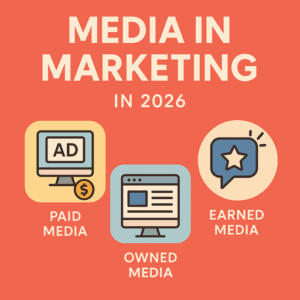Over 75% of B2B buyers use LinkedIn to research potential vendors, yet most sales professionals fail to convert these profile views into meaningful connections. Think about it: how many times have you noticed someone viewed your profile, but nothing ever came of it?
The truth is, profile views are just the starting point. Without strategic follow-ups, personalized outreach, and consistent engagement, those potential leads will remain just that—potential. A LinkedIn prospecting tool helps bridge this gap, turning passive interest into active conversations. But how exactly does it work, and how can you use it effectively to build genuine relationships? Let’s dive in.
What is a LinkedIn Prospecting Tool?
A Linkedin Prospecting tool is a software or platform designed to enhance how you find and connect with potential clients, leads, or business contacts on LinkedIn. These tools automate and streamline the process of prospecting, making it easier to reach out to the right people at the right time. They help users search for prospects based on specific criteria, track interactions, and even craft personalized messages.
While LinkedIn itself offers basic search functions, a prospecting tool adds an extra layer of sophistication, turning a simple profile view into an actionable lead. For instance, these tools can help users organize their outreach efforts, track follow-ups, and even manage multiple communication threads, ultimately making the entire process more effective and efficient.
Making the Most of LinkedIn Connections
At first glance, LinkedIn is a vast network of professionals, and it can sometimes feel overwhelming to figure out how to make genuine connections. The platform provides a wealth of opportunities, but it also requires strategy and persistence to cut through the noise.
With a LinkedIn prospecting tool, you don’t just stop at viewing a profile. These tools help you take the next step by offering deeper insights into potential leads, helping you understand their interests, career history, and shared connections. This allows you to tailor your outreach messages in a way that feels personal and relevant rather than generic.
Without a prospecting tool, it’s easy to become one of many people sending the same standard connection requests, hoping for a response. These tools help you stand out by offering features like advanced search filters, automated messaging, and analytics that can provide valuable data on the effectiveness of your outreach efforts. The result? A higher chance of building meaningful relationships with people who matter to you and your business.
Navigating the Cold Outreach Process
We’ve all received connection requests or messages on LinkedIn that feel, well, cold. There’s no attempt to relate to us personally or demonstrate why we should connect. But in a world where time is precious, a lack of personalization can leave potential leads uninterested. While cold outreach is often necessary, the challenge lies in how to make it feel warmer.
A LinkedIn prospecting tool can enhance your cold outreach efforts by helping you research your leads before sending a message. Rather than sending a blind request, you can craft personalized notes by referring to something specific on their profile, such as their recent post, shared interests, or mutual connections. This not only shows that you’ve done your homework but also signals that you’re genuinely interested in connecting with them on a professional level.
For instance, if you’re prospecting a potential business partner, you could mention their recent achievements, a project they’re working on, or even a common interest. A tool can help you filter the right prospects, identify patterns, and ensure that your outreach is personalized, thoughtful, and not just another generic request.
The Power of Automation
One of the biggest benefits of a LinkedIn prospecting tool is automation. Rather than manually searching for prospects, sending connection requests, and following up, these tools can handle much of the work for you. Automation isn’t just about saving time; it’s also about consistency. Regular and timely outreach is key to building professional relationships, but it’s easy to forget to follow up or lose track of conversations.
With automation, a LinkedIn prospecting tool allows you to schedule follow-ups, track previous messages, and ensure you never miss an important connection. You can set up automated campaigns to send messages to different groups of prospects, ensuring that your outreach is structured and targeted. This way, you can nurture multiple leads simultaneously, reducing the risk of losing potential opportunities due to oversight.
By freeing up your time with automated systems, you can focus more on the conversations that matter, bringing a more personal touch to the interactions that truly count.
Analyzing and Refining Your Outreach Strategy
A LinkedIn prospecting tool doesn’t just automate and organize the outreach process – it also provides valuable insights. For instance, you can see which messages and connection requests are getting responses, which industries or job titles are more responsive, and how you can refine your approach for better results.
Analytics tools help you understand the patterns and trends that drive successful connections. You might find, for example, that your messages to people in certain sectors receive more responses than others, or that certain keywords in your outreach tend to catch more attention. By leveraging this data, you can fine-tune your strategy, making it more efficient and more likely to yield results.
Moreover, these tools give you the opportunity to test different messaging strategies. You can A/B test your outreach approaches, trying different subject lines, tones, or call-to-actions to see which ones resonate best with your target audience. Over time, this helps you develop an optimized outreach process that continually evolves and improves, giving you a competitive edge when connecting with others on LinkedIn.
Beyond Profile Views: Building Meaningful Relationships
The real power of LinkedIn lies not in the number of profile views or connection requests you send but in the relationships you can build from those connections. A LinkedIn prospecting tool gives you the ability to nurture and manage these relationships by helping you keep track of interactions and following up at the right time.
Rather than viewing LinkedIn as just a platform to gather leads, think of it as a space to build long-term relationships. These tools allow you to deepen connections by helping you stay engaged with your prospects, whether it’s through liking their posts, commenting on their updates, or sending them relevant content.
For example, after connecting with someone, you can use a LinkedIn prospecting tool to see if they’ve shared any content recently. You can then engage with that content and initiate a conversation around it. This kind of genuine engagement strengthens the relationship, making the connection less transactional and more authentic.
It’s important to remember that connections are not just about what you can get but also about how you can provide value to others. By helping others, offering insights, or simply acknowledging their expertise, you create goodwill, which can lead to mutually beneficial professional relationships in the long run.
The Bottom Line
In the fast-paced world of digital networking, LinkedIn offers unparalleled opportunities to connect with professionals from all over the globe. However, the challenge lies in transforming these initial connections into something more meaningful. While simply viewing profiles or sending connection requests might seem like enough, a LinkedIn prospecting tool takes your networking game to the next level. It allows you to go beyond profile views, enabling you to engage, nurture, and grow your professional relationships.
By combining automation, personalization, and insightful analytics, these tools ensure that your outreach is both efficient and effective. They help you manage your interactions, refine your strategies, and build lasting connections that go far beyond the digital realm of LinkedIn.









